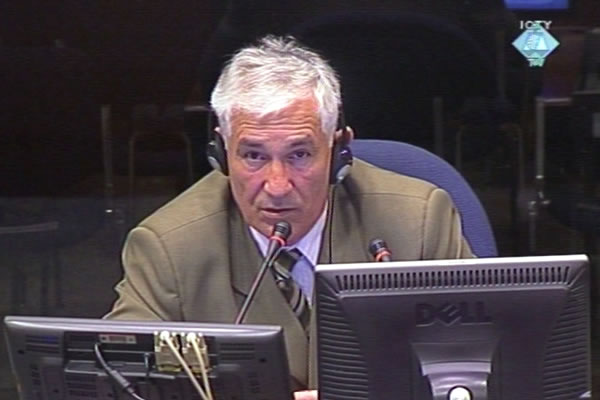Home
MRKSIC: SHELLING AIMED AT 'DRIVING THE PEOPLE CRAZY'
In his cross-examination, Mile Mrksic explained why he believed the Croatian artillery attacks were aimed at civilians and why in his view the civilians didn’t return to their houses as was envisaged in the evacuation plan drafted by the Krajina leadership
 Mile Mrkšić, svjedok odbrane Ante Gotovine
Mile Mrkšić, svjedok odbrane Ante Gotovine In his cross-examination, prosecutor Russo gave Mile Mrksic, Ante Gotovina’s defense witness, an opportunity to elaborate the claims he made in his examination-in chief and to corroborate the allegations in the indictment better than many prosecution witnesses, including several military experts, have managed to do. During and after Operation Storm, at the time when the crimes Croatian generals Gotovina, Cermak and Markac are charged with were committed, General Mrksic was the commander of the Serbian Krajina Army (SVK).
Asked to clarify the claim he made in the examination-in chief about the accuracy of the Croatian Army (HV) artillery attack on military targets in town and the ‘random shelling’ of other towns that followed, Mrksic said that he was ‘surprised’ by the enemy actions. Instead of proceeding with accurate guided missiles and redirecting attacks from the few military targets in Knin to the front lines, the Croatian artillery used inaccurate multiple rocket launchers to target inhabited places in the Krajina hinterland, where there were no combat units.
Describing the attack on Knin, the witness said that on the first day of Operation Storm, on 4 August 1995, the whole town was shelled except for the UN mission headquarters. The rockets that were used could not cause great destruction; instead they made a sound that ‘drives the people crazy’. After the first shells hit the town, the witness contends, he saw children crying and women in panic fleeing their homes; ‘they didn’t even have time to get dressed’.
‘The aim was to frighten the civilian population and to make Serb fighters run to their homes and check how their families are doing, which would shake the defense lines’, Mrksic said, concluding his analysis of the artillery attack on Krajina. The prosecution wanted to prove the very same point by tendering into evidence the transcripts of the Brijuni meeting of 31 July 1995. Addressing the high-ranking military and police officials, the Croatian president Tudjman said that it was important ‘that civilians leave first and the army will follow them’.
Mrksic said that the civilians had left Krajina primarily because towns were shelled; the prosecution asked him to explain why the Krajina leadership decided to evacuate the population on 4 August 1995. The people would have sought shelter from the attack even if no such decision had existed, Mrksic claimed, but everybody would have returned to their homes once the danger was over. ‘Nobody will leave voluntarily that little house of his, his piece of land and the little cow on a whim’, Mrksic explained, adding that the evacuation was supposed to be a temporary solution before the international community responded. As there was no response and the conditions in the town of Srb in Lika, where most of the refugees had gathered became unbearable, the civilians and the army continued fleeing towards Bosanski Brod and Banja Luka.
Mrksic will complete his evidence tomorrow morning after the re-examination by Gotovina’s defense counsel Luka Misetic.
Linked Reports
- Case : Gotovina et al. - "Operation Storm"
- 2009-06-19 ACCURATE FIRE ON MILITARY TARGETS, RANDOM TARGETING OF CIVILIANS
- 2009-06-18 PEOPLE WERE DRILLED TO FLEE INTO THE WOODS, NOT TO SERBIA
- 2009-06-17 MRKSIC BEGINS HIS EVIDENCE AS GOTOVINA’S DEFENSE WITNESS
- 2009-06-23 ‘GOLDEN BRIDGE’ FOR KRAJINA SERBS
- 2009-06-24 WHAT CONSTITUTES ‘MASS BURNING’
- 2009-06-25 AS IMPRESSIVE AS IT GETS
